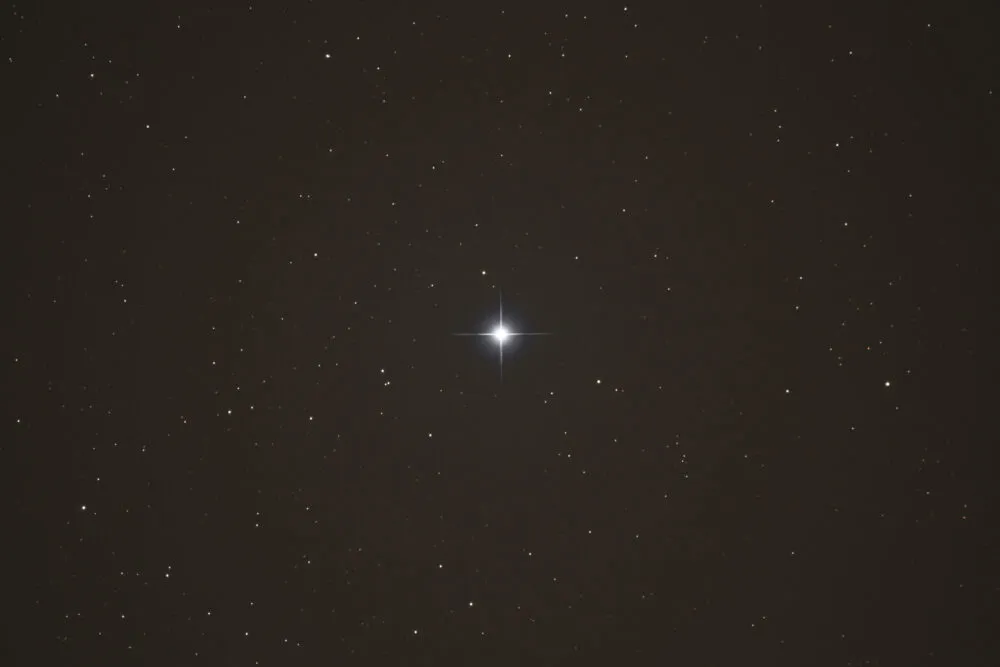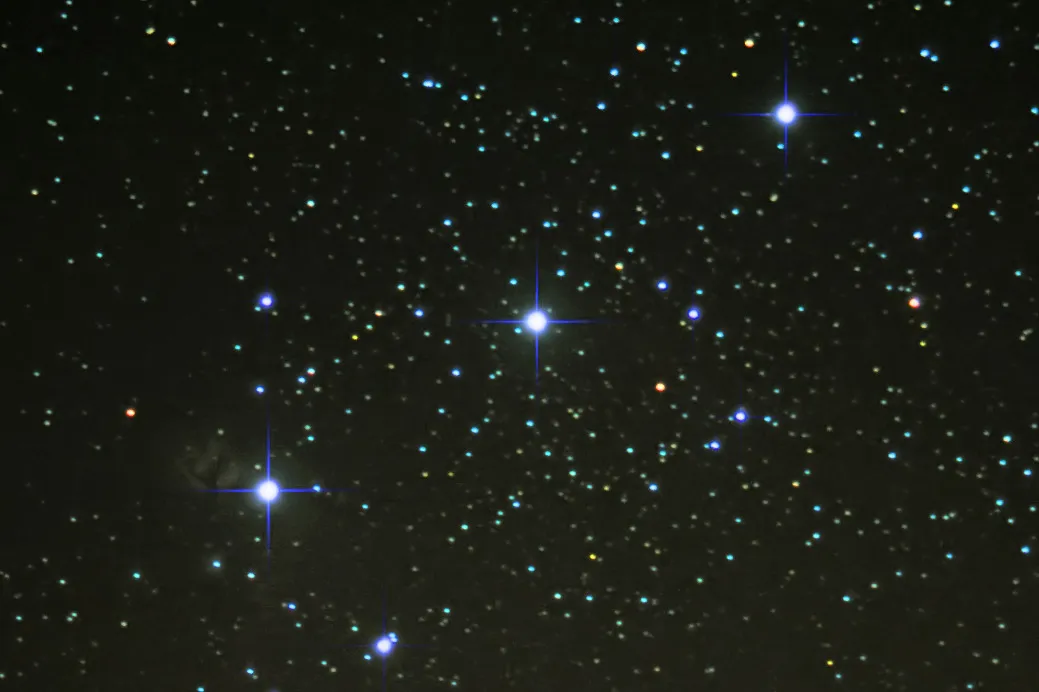Saiph (Kappa (κ) Orionis) is one of the main pattern stars in the constellation Orion, marking its southeast corner.
Saiph is typically shown marking one of Orion’s knees, although the formal translation of the name means ‘sword’, from the Arabic saif al jabbar; ‘sword of the giant’ (for more on this, read our guide to Arabian astronomy)

How Saiph got its name
Interestingly, the name Saiph was originally attributed to Eta (η) Orionis, which sits west of the three Belt stars in Orion.
It is said that Saiph’s name was originally attributed to what we call Orion’s Belt today, but got mistakenly transferred to Kappa, where it remained.
Saiph is the sixth brightest star in Orion, appearing fainter than two of the Belt stars, but marginally brighter than Mintaka (Delta (δ) Orionis) at the Belt’s western end.

Saiph is a bright, B-class supergiant star that appears to shine blue-white. Its spectral class is B0.5 Ia, ‘Ia’ indicating the luminosity class ‘bright supergiant’.
Saiph is estimated to lie at a distance of 650 lightyears, which makes it closer than Rigel (Beta (β) Orionis), another blue supergiant at a distance of 860 lightyears.
Despite this, Rigel appears much brighter to us, a characteristic attributed to the fact that Saiph is an extremely hot star with an effective temperature of 26,227˚C.

Consequently, it radiates much of its light in the ultraviolet part of the spectrum which we can’t see with our eyes.
Rigel is a multiple star system, but the main component Rigel-A, has an effective temperature of 11,826˚C.
Estimated to be around six times more massive and 22 times larger than the Sun, Saiph’s luminosity is around 57,000 times greater.
This guide originally appeared in the January 2022 issue of BBC Sky at Night Magazine.
